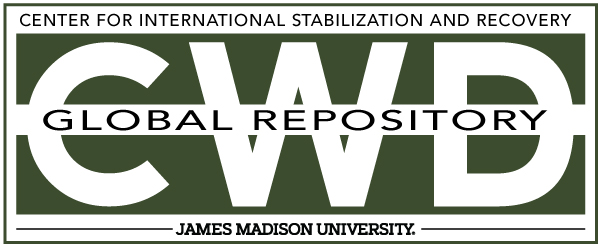Document Type
Other
Creative Commons License

This work is licensed under a Creative Commons Attribution-Noncommercial-No Derivative Works 4.0 License.
Publication Date
10-2020
Keywords
ERW Clearance, Cluster Munitions, Mine Action Review, MAG, HALO, NPA, 2020
Abstract
Key Findings:
- In the 10 years since the entry into force of the Convention on Cluster Munitions (CCM) in 2020, a total of more than 766 square kilometres of cluster munition-contaminated area has been cleared. During survey, clearance, and spot task operations nearly one million unexploded submunitions have been destroyed. Countless lives and limbs have undoubtedly been saved as a direct result, as well as the broader contribution to development.
- In 2019 alone, a global total of more than 130 square kilometres was cleared of cluster munition remnants (CMR), a new record, beating the previous high (in 2018) by nearly 2km2. An impressive number of unexploded submunitions, more than 132,000, were destroyed during clearance, survey, and spot tasks in 2019 (slightly less than in 2018). The true total area of clearance is probably considerably greater, given that several States not party have either not reported at all on clearance progress or have done so only partially or inaccurately.
- No State Party completed CMR clearance in 2019, but in 2020, three States Parties to the CCM—Croatia, Montenegro, and the United Kingdom—fulfilled their Article 4 obligations, all within their original 10-year treaty deadlines. Croatia and Montenegro both completed clearance of known CMR-contaminated areas and the United Kingdom confirmed that UK bombing data for the Falkland Islands shows there is no evidence that cluster munitions were dropped on the four remaining minefields in Yorke Bay which the United Kingdom is clearing as part of its Article 5 obligations under the Anti-Personnel Mine Ban Convention (APMBC).
- In total, ten States Parties and one State not party have been declared free of cluster munition-contaminated area in the last 10 years.2 Mauritania, which had reported fulfilment of its Article 4 clearance obligations in 2013, was added back to the list of affected States Parties after discovering cluster munition-contaminated areas in territory under its jurisdiction or control.
- As at 1 October 2020, 25 States and three other areas were confirmed or suspected to have CMR-contaminated areas under their jurisdiction or control,3 an overall decrease of two States on the previous year. While Croatia, Montenegro, and the United Kingdom were removed from list, Mauritania was added. Thanks to the progress under the CCM to date, of the 110 States Parties to the CCM, only ten had cluster munition-contaminated areas to release: Afghanistan, Bosnia and Herzegovina (BiH), Chad, Chile, Germany, Iraq, Lao PDR, Lebanon, Mauritania, and Somalia.
- Of the ten affected States Parties, only Lao PDR is massively contaminated (defined as covering more than 1,000km2 of land), while heavy contamination exists in Iraq (covering more than 100km2). In all other affected States Parties, the extent of contamination is medium or light.
- As in previous years, the highest amount of clearance took place in the world’s most CMR-contaminated State, Lao PDR, with more than 45km2 of CMR-contaminated area released through clearance (excluding commercial clearance) along with destruction of more than 80,000 submunitions during survey, clearance, and spot tasks. To help put the scale of this clearance achievement into perspective, 45km2 is close to three times the size of the city of Geneva. Very significant clearance also occurred in States not party Vietnam and Cambodia.
- No clearance was recorded or reported for 2019 in three States Parties: Chile, Mauritania, and Somalia. While Chile did not clear any CMR contamination in 2019, it did cancel a significant amount of land found not to be contaminated, which marks the first progress in Article 4 implementation since Chile became a State Party to the CCM in 2011. As mentioned previously, Mauritania reported discovering cluster munition-contaminated areas in territory under its jurisdiction or control and planned to investigate the contamination. But again in 2019, Somalia made no progress in survey specific to CMR or clearance of submunitions.
Included in
Defense and Security Studies Commons, Peace and Conflict Studies Commons, Public Policy Commons, Social Policy Commons



